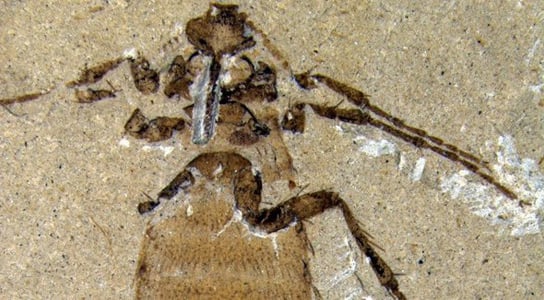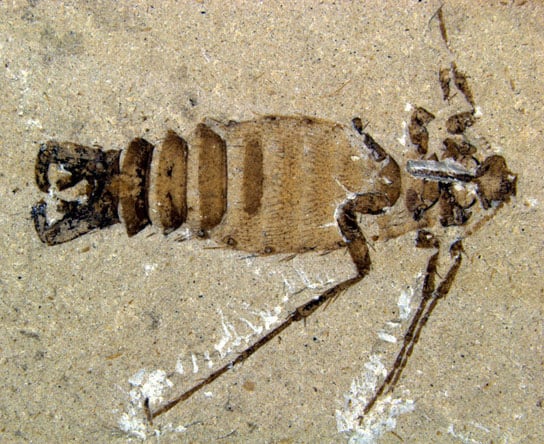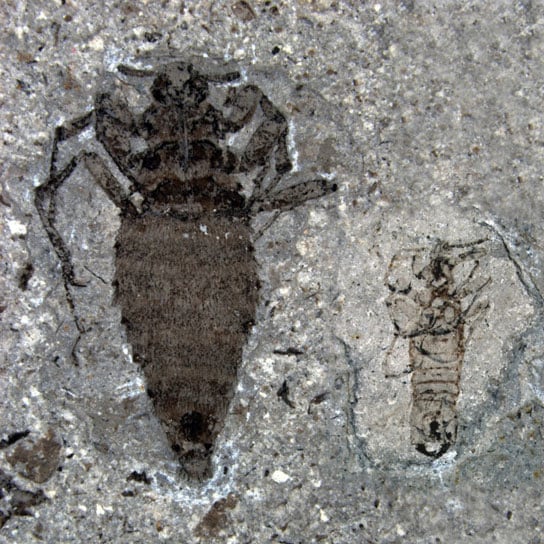
The primitive ancestors of modern-day fleas were built to drain the blood of dinosaurs, more than 150 million years ago, during the Jurassic period. This potential host-parasite relationship was recently uncovered thanks to a set of preserved fossils found in China.
Fleas, insects from the Siphonaptera order, infest all types of mammals and birds, but little is known about their origins. The fossil record consists mostly of modern-looking fleas from the past 65 million years, and possible fleas from the Cretaceous period, though this has been debated by experts. Michael Engel, a paleontologist, from the University of Kansas in Lawrence, and his colleagues have extended the history of these parasites by at least 60 million years. Their findings were published last week in the journal Nature.

Engel et al. studied nine flea specimens from two sites. One of them is the 165-million-year-old Jurassic site in Daohugou and the other is the 125-million-year-old Cretaceous strata at Huangbanjigou in China. These prehistoric flea species were between 8 and 21 mm (0.3 to 0.8 in) in length, while today’s fleas range between 1 and 10 mm (0.04 to 0.4 in).
The Jurassic and Cretaceous fleas lacked the spring-legged, jumping specializations of their more modern cousins, but their mouthparts were armored, studded with saw-like protuberances, unlike the smooth jaws of modern fleas.

These traits may indicate that prehistoric fleas were ambush specialists, catching meals by hiding in the periphery and scrambling onto their hosts for a quick meal, before bolting off again. The mouthparts were specialized for working into heavy hides, such as the ones found on dinosaurs.
The only way to confirm this is to find fossilized fleas caught in the act of feeding on dinosaurs.
Reference: “Diverse transitional giant fleas from the Mesozoic era of China” by Diying Huang, Michael S. Engel, Chenyang Cai, Hao Wu and André Nel, 29 February 2012, Nature.
DOI: 10.1038/nature10839